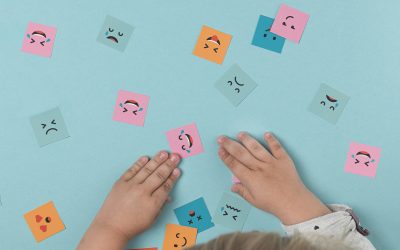Why Are Rules and Boundaries Necessary?
a. Provide a Safe Environment
Boundaries show children what is acceptable and offer them a safe framework. Within this framework, children are not afraid to explore and try new things. Clear boundaries reduce uncertainty-related anxiety and help children feel more secure.
b. Develop a Sense of Responsibility
Consistent boundaries allow children to learn the consequences of their actions. This helps them take responsibility and learn from their mistakes. Children with a sense of responsibility make more confident decisions.
c. Supports Self-Regulation Skills
Boundaries help children learn to control their emotions and behaviors. Children who develop self-regulation skills can stay calm in challenging situations and respond appropriately. This, in turn, boosts their self-confidence.
d. Develops Decision-Making Skills
Providing children with opportunities to make choices within boundaries strengthens their decision-making abilities. For example, asking, “Would you like to wear the red or the blue t-shirt?” helps increase their self-confidence. This highlights the importance of offering choices while setting limits.
e. Strengthens Problem-Solving Abilities
Boundaries help children develop problem-solving skills. Acting within the framework of rules and limits encourages children to think critically and find logical solutions to challenges.
f. Teaches Healthy Social Relationships
Boundaries teach children to respect the rights and limits of others. This helps them become more successful and confident individuals in social interactions.
g. Instills a Sense of Achievement
When children succeed within established boundaries, they feel stronger. Completing small tasks or following rules reinforces their sense of accomplishment and enhances their self-confidence.
How to Set Rules with Positive Parenting?
a. Be Clear and Specific
Rules should be simple and clear for children to understand. Using age-appropriate language ensures better comprehension. For example, instead of saying, “Please be quiet,” saying, “Can you lower your voice?” makes it easier for the child to understand and follow the rule.
b. Be Consistent
Consistency is key when setting rules. When children experience the same approach every time, they know what to expect, which reinforces their sense of security. Children prefer stable and predictable rules rather than constantly changing ones.
c. Offer Choices
Providing children with choices makes them less resistant. Options allow children to express themselves and make decisions within set boundaries. For example, asking, “Would you like to pick up your toys first or your books?” helps develop their decision-making skills while maintaining limits.
d. Use Positive Language
Positive language enhances a child’s motivation. Instead of saying, “Don’t run!” using “Please walk slowly.” provides a more encouraging and guiding approach. Positive phrasing helps direct the child’s behavior more effectively and fosters a cooperative attitude.
The Contribution of Boundaries to Family Relationships
The process of setting boundaries is not only related to the child’s development but also contributes to family relationships. Boundaries that strengthen communication and understanding between family members help ensure mutual respect. A consistent approach reinforces a sense of security within the family and ensures that children trust their parents. Strong boundaries within the family help everyone stay connected in a healthy way and build stronger bonds.
The Difference Between Discipline and Punishment
Positive discipline is an educational approach. Punishment, on the other hand, only temporarily halts the behavior. The purpose of discipline is to guide children and teach them appropriate behaviors. Punishment can create fear and anger in children, while discipline leads them to learn responsibility. Instead of being punished, children should learn the right behaviors, which increases their internal motivation.
Positive Discipline Methods
a. Be a Role Model:
Children observe and imitate their parents’ behaviors. Therefore, being a good role model is crucial. Demonstrate values such as kindness, patience, and understanding through your actions. As children observe your attitudes, they internalize these values.
b. Set Natural and Logical Consequences:
Allowing children to face the natural consequences of their actions helps them understand boundaries. For example, if they refuse to share their toys, they may be given a break from playing with that toy for a while. Such consequences help them learn the result of their behavior.
c. Encourage:
Appreciating positive behavior helps the child feel valued. Rewarding good behavior can reinforce correct actions. A compliment like, “Thank you for picking up your toys before playtime!” increases the child’s desire to repeat the right behavior.
Activities that Reinforce Rules and Boundaries
a. Create a Family Rules Chart at Home:
Family rules can be displayed visually on a wall where children can see them. Creating a family rules chart with your child, including pictures, will help them remember and internalize the rules more easily.
b. Play Emotion Management Games:
To develop children’s emotional intelligence, you can play games that help them recognize and manage emotions. Tools like emotion cards allow them to identify their own feelings and become more sensitive to others’ emotions.
c. Establish Daily Routines:
Daily routines create secure boundaries in a child’s life. Especially routines like bedtime and mealtime help the child feel safe. Activities done at the same time every day naturally create boundaries.
Strategies for Dealing with Difficult Situations
a. Stay Calm:
It is important to remain calm when facing a child who is testing boundaries. When the child is upset or angry, demonstrating patience and a firm approach helps you manage the situation.
b. Understand Their Emotions:
Understanding your child’s emotional state allows for effective communication. Phrases like, “I can see you’re sad, but we need to change this behavior,” can help you connect emotionally.
c. Offer Alternatives:
When setting boundaries, offering options can make the child less resistant. By suggesting alternatives like, “You can play a different game instead,” you show that you understand their desires and address their emotional needs.




